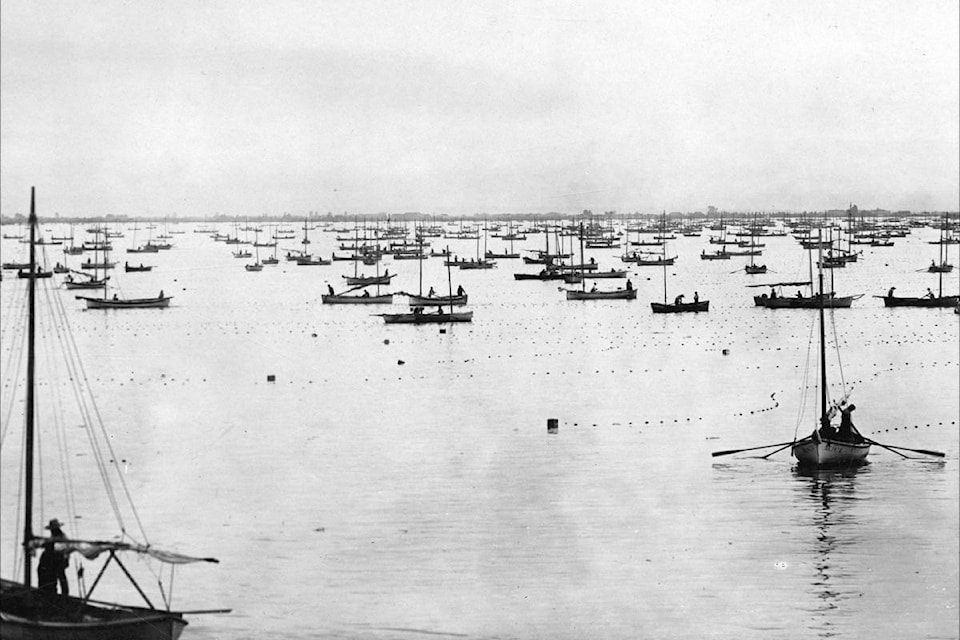Finally, there is some positive news for Pacific salmon — the number of Fraser River sockeye heading toward the mouth of the river suddenly began to soar this week.
For two days in a row on Aug. 12 and Aug. 13, a test fishery for Fraser River sockeye has caught more sockeye in each day than any single day since 2014.
"It's an incredibly welcome bump in the salmon returns this year," said Bob Chamberlin of the First Nation Wild Salmon Alliance.
More than 26,000 salmon were caught in the Johnstone Strait test fishery on Aug. 12, and more than 23,000 were caught on Aug 13.
These totals far exceed expectations — so much so that some commercial fishers are calling for the federal fisheries minister to intervene and order Fisheries and Oceans Canada (DFO) to open the Fraser River to commercial sockeye fishing for the first time since 2018.
Because decisions on whether to open are made ahead of time based on pre-season projections, there is no general opening planned for commercial fishing in the Fraser River this year. The DFO also works with the United States through the Pacific Salmon Treaty to make harvesting decisions.
"We haven't fished on the Fraser River for six years, and this is beginning to look like number seven," said Paul Kershaw, a commercial fisherman who represents gillnet harvesters in the Fraser River and Johnstone Strait. "So, yeah, that part's pretty depressing, but the actual run size is pretty exciting."
Kershaw runs Ma and Pa fishing out of Ladner and has been fishing the area for 53 years.
There will be limited fishing for sockeye in the Johnstone Strait this coming weekend, as was the case in 2022, and the Fraser River sockeye fisheries are open for a limited time for First Nation harvesting, according to the DFO.
To make harvesting decisions, the DFO conducts test fishing operations, including one in an area in the northern portion of the Johnstone Strait that is set up to capture fish bound for the Fraser River and spawning grounds upstream. They use this number to predict how many fish will enter the river, based on historical data.
Initial projections for Sockeye returns this year were for more than two million fish to come back to the river, later amended to more than six million. Kershaw said that based on the numbers seen in the test fishery, the returns could be double the latest projections.
If they came in that high, he said it could mean a commercial harvest of roughly one million fish, worth between $50 million and $100 million, depending on the market.
The reasons for the strong salmon returns are still not entirely clear. Chamberlin, Kershaw, and environmental groups credit the removal of dozens of open net-pen salmon farms in the Discovery Islands area.
"The fish that are returning now are the first ones that made it past Discovery Islands without having to run the gauntlet of disease pathogens and sea lice," Chamberlin said.
B.C. salmon farmers dispute this narrative. Brian Kingzett, the executive director for the B.C. Salmon Farmers Association, said in an email that it is "highly irresponsible" to attribute the return of Fraser River sockeye to the removal of salmon farms.
"We are all excited about strong returns to the Fraser this year," Kingzett said.
Kingzett and the salmon farmers cite studies, including some from the DFO, that show salmon farms have minimal impact on wild salmon. He also pointed to studies that attribute the returns this year to cooler ocean conditions.
Environmental advocates, such as Karen Wristen, executive director of the Living Oceans Society, provide contrary evidence that fish farms increase the amount of sea lice in the water and that farmed salmon can eat wild juveniles.
"Whether they're eaten or diseased or simply covered in parasites, they don't have a very good chance of getting past the salmon farms," she said.
The DFO gives some credit to the clearing of the Big Bar landslide on the Upper Fraser River. Because sockeye return in four-year cycles, this is the first brood to return to the river having had access four years ago in 2021, once the landslide was cleared.
"While it is not possible to attribute the scale of the returns to any single factor, it is certain that this large return would not have occurred without the combined efforts of First Nations, the federal government and the Government of British Columbia to restore fish passage at the Big Bar landslide," the DFO said in a statement to Black Press Media.
Whatever the cause of the bump in numbers this year, all groups are celebrating the return of Fraser River sockeye.
Chamberlin wants to ensure this is the start of a rebound, not just a temporary bump.
"I think given the overall state of salmon in this in the past decade or two, there's reason for happiness," he said. "But at the same time, we need as many of those fish to get to the river and spawn so we can see even greater returns in four years' time."


